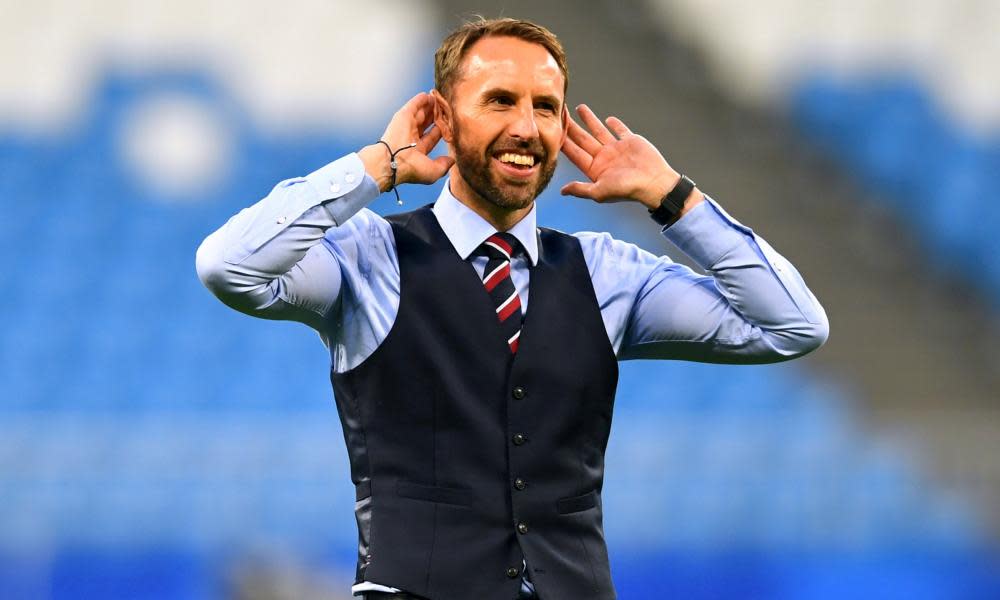What happened next? Did the World Cup waistcoat boom – inspired by Gareth Southgate – last beyond the summer?

England surprised many with its performances in the World Cup in the summer. But few could have foreseen that the team’s manager, Gareth Southgate, bouncing along the sidelines of Moscow’s Otkritie Arena in 29C heat wearing a navy Mark & Spencer waistcoat, would be annointed a style symbol. His choice of clothing was as neat and unflashy as his own career as a defender, yet it became emblematic of a nation daring to dream. M&S has sponsored the England team since 2007, but few managers of the national side have actually worn the goods.
Still, the knock on effect of the £65 waistcoat was palpable. To wear one was to invoke solidarity with Southgate, ergo the team. During the tournament, waistcoat sales at M&S doubled (although definitive figures are not, as yet, available). Before long, #WaistcoatWednesday and #LuckyWaistcoat began trending on social media and, for some sweet if undetermined reason, Warwick castle flew a waistcoat in lieu of a flag. The M&S Collection luxury navy slim-fit waistcoat, as worn by Southgate, was a sellout.
According to James Doidge, head of menswear design at M&S, sales have remained strong since the World Cup ended, enjoying a particularly robust period around Halloween (Southgate was an easy last-minute costume). In a bid to keep things going, the model David Gandy is wearing a version of Southgate’s in grey tweed in the M&S Christmas advert. And while one British company producing a Christmas jumper in homage – featuring a knitted waistcoat – suggests that the trend has officially jumped the shark, it was undeniably nice while it lasted.

 Yahoo News
Yahoo News 